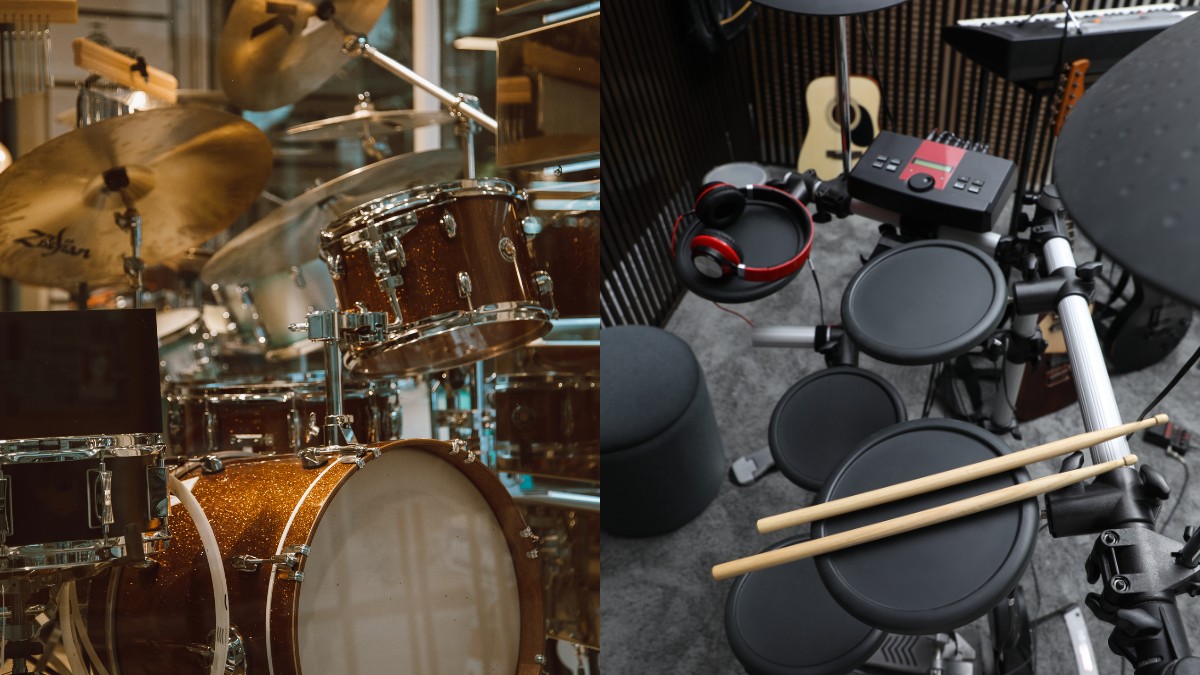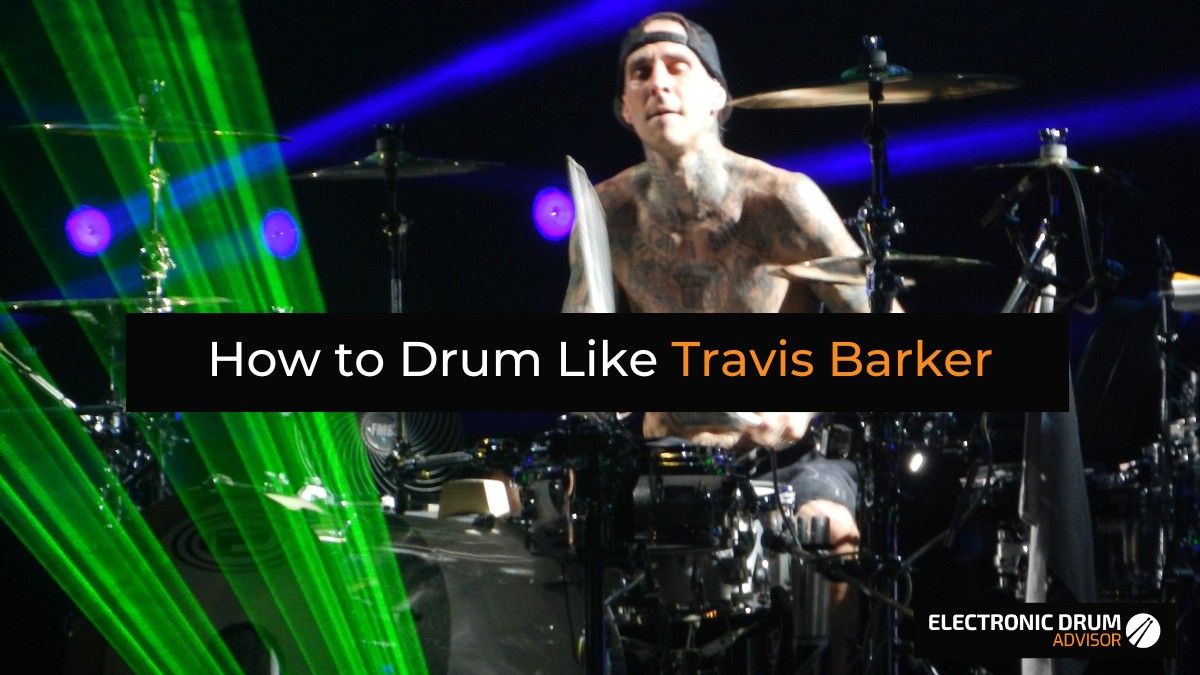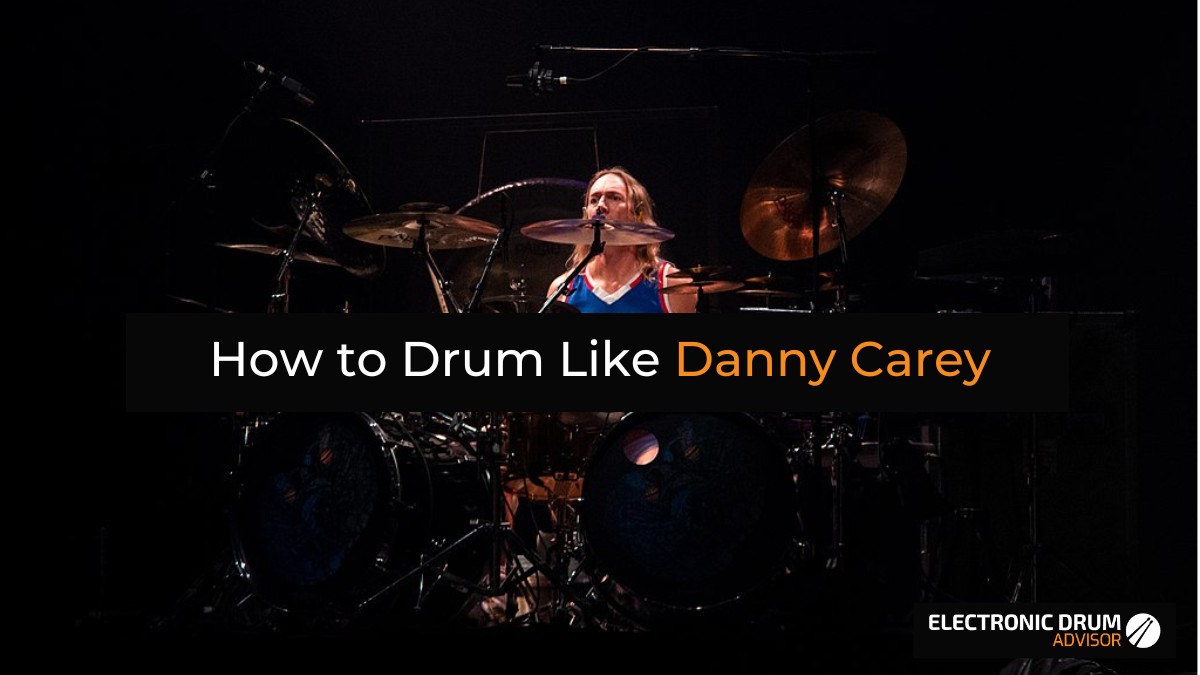10 Metal Drumming Tips to Sound Like a Pro

Metal drumming can be incredibly thrilling to play. In this article, we will discuss different tips on how to improve your playing style, techniques, and beats for metal. We will also show you ways to set up your drum set for metal (including tuning, hi-hat clutches, and double bass pedals).
Take your metal drumming to the next level with these 10 tips and techniques.
Contents
1. Double Bass Drumming
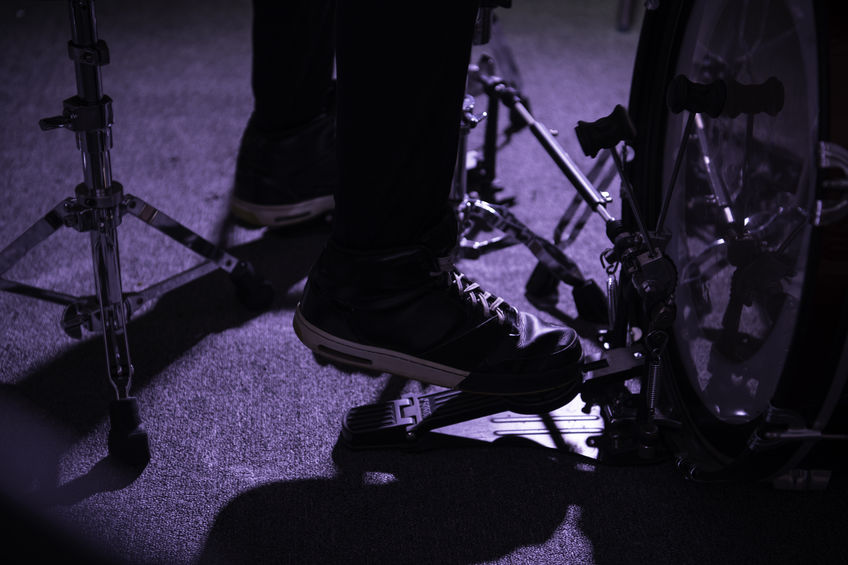
Double Bass Drum pedals, or the use of two bass drums, is one of the most defining characteristics of almost all of the metal sub-genres.
If you want to start playing metal music, then you should focus on improving your double kick technique. Work on being able to play at least the foundational double kick strokes with both good control and speed.
Like everything when it comes to drumming, you should focus on accuracy first and speed later. Beginner metal drummers often tend to speed up as much as possible, but this will just make you a sloppy drummer.
You want to make sure that your double kick strokes are solid. You should start by playing single-stroke rolls between your right and left feet. The majority of the standard metal double kick strokes are single-stroke rolls.
This can sound amazing when you get to fast speeds, but it can be difficult to play this along with other beats. So you need to work on your coordination and speed with consistency and discipline.
Learn to walk before you run. You need to get fast as a metal drummer, but to do so, you need to build your foundations.
Secondly, you can then start working on triplet double bass drumming patterns, which are also very useful and heavily used in many metal genres.
What kind of double kick pedal should you get? You don’t need to spend all your money on a top-end double kick pedal. However, you do need to get one of decent quality. Check out our article on the best double bass drum pedals.
If you’re looking to buy an electronic drum set, then check out our article on the double bass drum electronic drum sets because not all of them are compatible with double kick pedals. If you’re a metal drummer, it can be very frustrating playing an e-drum set with only one pedal.
2. Blast beats
Blast beats are fast alternating strokes between your snare and kick drum. The ride or hi-hat is usually synced as well along with this beat.
Blast beats are more commonly used in more extreme metal sub-genres, such as death metal and black metal.
Tips for playing blast beats:
- Start slow and make sure you have the basics down.
- Play to a metronome.
- You can use either single pedals or double pedals for these depending on what type of blast beat you’re doing.
- Make sure your technique is solid. Don’t be too tight with your drumsticks when you’re doing this because it requires a lot of speed, and you don’t want to injure yourself in the long run. Make sure you’re using good bounce and rebound on your drumsticks if possible.
3. Drum Tuning for Metal
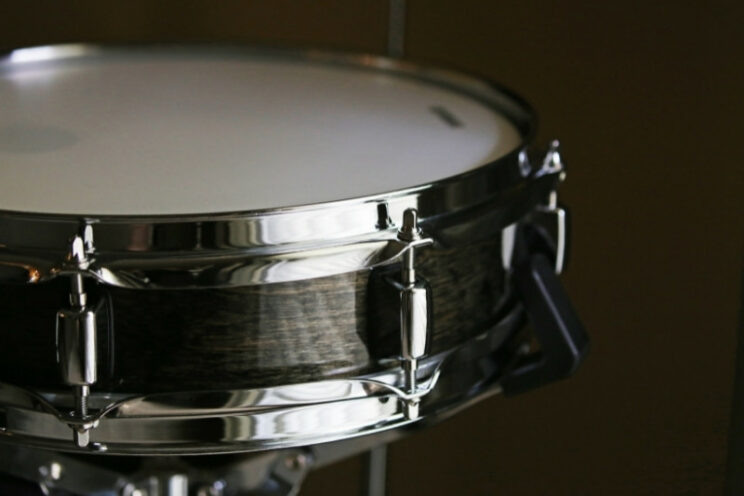
The tuning of the drums has quite an effect on what your drum kit will sound like in metal genres.
Metal drummers tend to tune their snare drum relatively high, with either a medium or high tension. You want to have a real crack out of the snare drum.
The bass drum is usually tuned reasonably low, but you also need the beater click sound (higher sound frequencies) coming from your bass drum.
This helps your audience to hear the double kick strokes both on stage and in recordings. Otherwise, even the most intricate of double bass drum strokes would just be heard as continuous low-end noise.
To get the beater sound, you might need to muffle the head to stop the excess sustain of the drum head. Using some sort of dampening object (such as a pillow or purpose-made dampener) inside up against the inside of the batter drum head is quite a good thing to do for metal genres.
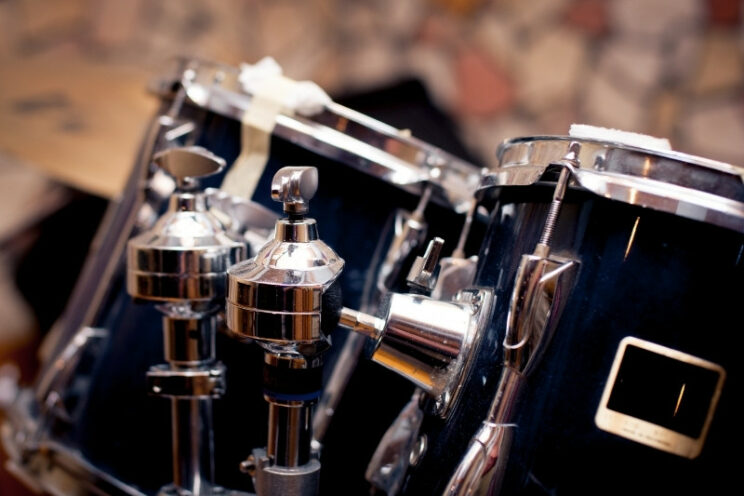
The toms are usually tuned pretty low. You want to get a good thump off these drums when you’re doing fills and tom rolls when you’re playing metal music.
Ideally, you want to have thicker drum heads, such as the Remo pin-stripe heads (check out our drum heads article for more info). These have a bigger attack and will give a bigger punchy sound. So be careful about your drum head selection. If you’re going to be hitting drum heads very hard then make sure you get strong drum heads.
4. Rim Shots
Metal drumming is all about being able to drum loudly and to heavily accent your beats when necessary.
Rim shots help to give you a good cracking sound from the stare drum.
To perform a rim shot, simply hit the rim of the snare with the shaft of the drumstick while you’re striking the drum head with the tip of the stick.
You should practice these so you are hitting both the rim and the head at the same time.
This can give us seriously loud crack and this is very good if played in conjunction with regular snare hits. You get a nice accented sound that can cut through the entire mix of the band.
When you’re doing rim shots, make sure you’re not gripping the drumstick too tightly. You need to maintain a pretty loose feel because you could damage your wrists if you’re allowing that shock to go all the way up to your arm.
5. Hi-hats

If you’re going to play your double kick pedal, then your left foot might be busy with the left kick pedal a lot of the time.
Therefore you won’t have access to press down on your hi-hat.
Often, metal drummers just keep the hi-hat clutch engaged and reasonably low.
You don’t want to have the hi-hat too tight because it will sound too clicky and flat. You need the hi-hat to be pretty trashy, but not one that’s going to sound way too messy in the mix.
Also, when you’re playing your hats, it’s best to do big strokes using the shoulder or the shaft of your drumstick on the side of the hats. You shouldn’t be playing the middle of the hi-hat with the tip of the drumstick.
6. Heavy Ride and Crash Playing.
It’s a very common feature in metal music for drummers to really ride on the crash cymbal, or to hit the ride cymbal pretty heavily using the shoulder of their stick.
This might be overkill in other genres, but that’s not the case for metal music!
Due to its high noise nature, metal music is somehow required to have a lot of crash and ride cymbal emphasis. You might have already noticed that while listening to metal music, so at the right time in the songs, don’t be afraid to go quite heavy on the symbols.
7. Drum Triggers
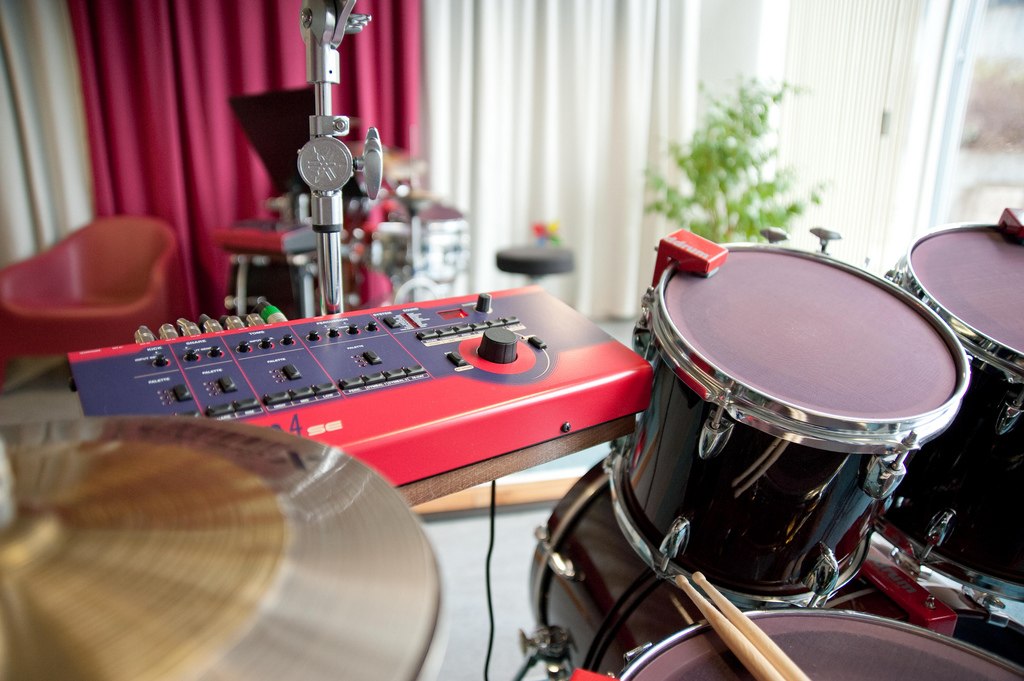
This is probably one of the most controversial points in this article.
Some metal drummers love triggers, and some think that using them is cheating. The fact is that a lot of metal drummers use drum triggers.
Why do drummers use drum triggers? It is now expected that drummers play blisteringly fast double bass drum rolls with very good sound and with great volume.
It is quite difficult to achieve massive speed, control, and volume at the same time. It takes many drummers countless years of practice and skill to do so.
Sometimes it’s just too exhausting to play very fast double-kick beats to a large volume. When you’re playing live, sometimes just using a bass drum trigger and hooking it up to the sound system with a great bass drum sample can dramatically improve the sound.
It’s not just about your purity as a drummer, it’s about what’s going to sound great in the band setting. Using the drum trigger, in our opinion, is often quite a good thing to do.
It can make up for bad miking in live situations, particularly if you’re playing a smaller gig. Having a good kick sound will cut through the entire mix while you’re playing and can make the whole drumming sound a lot better for the audience.
Drum triggers are not only used for the kick drum. They can also be used for the tom and the snare. You can even get triggers that can detect different strokes depending on where you hit the drum.
8. Cymbal choking

It’s very common in metal to choke the symbol.
Hit the cymbal hard with one stick and grab the cymbal with the other.
This silences the cymbal and completely removes all of its sustain.
You should practice being able to quickly get your left hand up to grab the cymbal. You should practice being able to go from a groove to choke on the cymbal without injuring yourself in the process!
9. Drumming Exercises and Workouts
Metal is all about playing loud and playing fast. You could be prone to injury as a drummer if you don’t stay flexible and if you don’t work out.
Make sure to do some drumming exercises, some drum workouts, and warm up properly.
Also, drumming very fast drumming for long periods can be quite exhausting. So make sure you have good cardio health if possible. When you’re in the gym, spend at least a bit of time on any cardio machine (treadmill, elliptical, cross trainer, bike, rowing machine, step-mill, etc) to get your workout in.
Do some warm-up exercises before you play. Younger drummers might feel invincible, but any drummers that have been injured before will advise you to warm up!
10. Know your Sub-genre(s)
We have outlined some of the broad and most important things that you should know as a metal drummer.
The styles, beats, and techniques that you will use will also depend on the sub-genre of metal that you’re playing.
Trash metal drumming is quite different from death metal drumming in style. Make sure to play along with a few great metal songs you like.
Check out some tutorials online based on your genre. If there is a local drum instructor who is very good at metal drumming, then they could be an invaluable asset to you.
Summary
Metal drumming has changed a lot over the years. It’s always being pushed further and further by drummers who are coming up with new techniques or re-working existing ones.
Steel your technique, increase your speed, enhance your endurance, give yourself some stamina so you can rock all night long.
Great metal is not just about the notes that you play on your drums. It’s also about the style, feel, groove, and tone of metal that you have expertise in.
Always remember to have fun with what you’re doing… but make sure that you’re not just a drummer who is playing some metal riffs or beats for a crowd. You should be a drummer who is part of a band that is actively pushing the boundaries of metal drumming!

